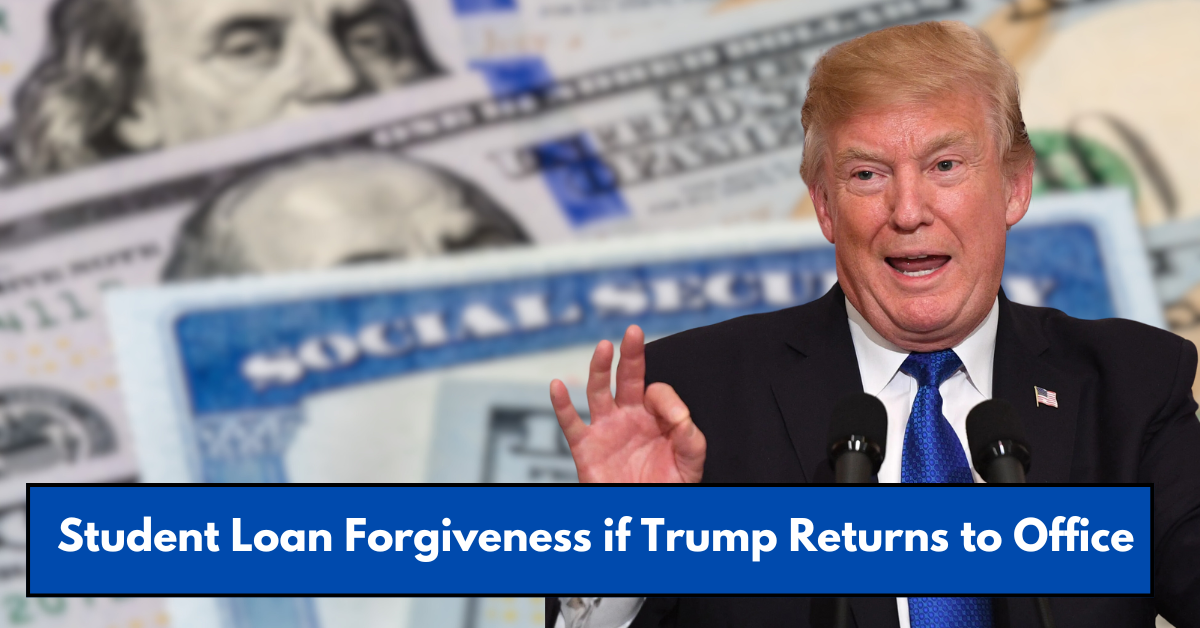With Donald Trump’s potential return to office, many student loan borrowers are anxious about the future of forgiveness programs. Trump has outlined plans to reduce government bureaucracy, eliminate excess spending, and reshape federal agencies, including the Department of Education.
These changes could significantly affect student loan forgiveness policies and repayment plans. In this article, we’ll break down the possible impacts, what borrowers can expect, and what steps they should take.
Trump’s Stance on Student Loan Forgiveness
Donald Trump’s previous term as president showed a clear opposition to extensive student loan forgiveness. He proposed significant changes, including:
- Eliminating the Public Service Loan Forgiveness (PSLF) program.
- Replacing multiple income-driven repayment plans with a single plan requiring borrowers to pay 12.5% of their discretionary income, compared to the current 10% under certain plans.
- Threatening to abolish the Department of Education entirely.
These proposals suggest that Trump’s administration may limit or eliminate forgiveness initiatives that currently benefit borrowers.
Can Trump Reverse Already Forgiven Loans?
The good news for borrowers is that reversing loans that have already been forgiven is nearly impossible. If you’ve had loans forgiven through programs like PSLF, income-driven repayment (IDR), or Borrower Defense to Repayment, there is little reason to worry. These decisions are legally binding and cannot be undone by a new administration.
However, some borrowers have experienced issues, such as reinstated loan balances due to administrative errors. While these cases are rare, they highlight the importance of staying vigilant and monitoring your loan status.
Potential Changes to Forgiveness Programs
Trump’s administration is likely to focus on reshaping future forgiveness initiatives. Key areas that could see changes include:
- Income-Driven Repayment Plans
- Trump has previously proposed merging repayment plans into one option with higher monthly payments.
- Public Service Loan Forgiveness (PSLF)
- Efforts to eliminate or limit PSLF could resurface, making it harder for public sector workers to qualify.
- Alternative Forgiveness Programs
- Programs introduced by the Biden administration, such as the SAVE Plan and hardship relief measures, may lose support under Trump’s leadership. These initiatives could face funding cuts or stricter eligibility criteria.
Impact of New Leadership in the Department of Education
If Trump returns to office, he will appoint new leaders for the Department of Education, likely individuals who share his views on reducing federal spending. During his first term, Betsy DeVos—Trump’s Education Secretary—took steps to:
- Limit Borrower Defense to Repayment claims.
- Create obstacles for borrowers seeking forgiveness.
Future leadership could implement similar policies, making it more challenging for borrowers to access forgiveness. However, programs like PSLF, which are established by Congress, cannot be altered without legislative approval.
Legal Challenges and Political Climate
Trump’s administration may not actively support ongoing lawsuits related to student loan forgiveness. Many of these lawsuits were initiated by states questioning the use of taxpayer funds for large-scale forgiveness programs. Without federal backing, the outcomes of these cases could shift, potentially impacting existing and future forgiveness plans.
Additionally, a Republican-controlled Congress may not prioritize extensive forgiveness initiatives. This political environment could lead to reduced funding and support for relief programs.
What Borrowers Should Do Now
While uncertainty looms, borrowers can take the following steps to stay prepared:
- Stay Informed
- Keep an eye on updates from the Department of Education and news about policy changes.
- Monitor Loan Status
- Regularly check your loan balance and payment history to ensure there are no errors.
- Explore Current Forgiveness Options
- If you’re eligible for forgiveness through PSLF, IDR, or Borrower Defense, submit your application as soon as possible.
- Contact Lawmakers
- Advocate for the continuation of forgiveness programs by reaching out to your representatives.
Conclusion: Patience and Preparedness
As the political landscape evolves, student loan borrowers must remain patient and proactive. While Trump’s return could bring significant changes to forgiveness policies, it’s crucial to remember that already-forgiven loans are safe.
The best course of action is to stay informed, explore current opportunities, and prepare for potential shifts in the system. Borrowers should also focus on long-term strategies to manage their debt, regardless of political changes.
This article has been carefully fact-checked by our editorial team to ensure accuracy and eliminate any misleading information. We are committed to maintaining the highest standards of integrity in our content.
Filza specializes in simplifying financial topics for everyday readers. Whether breaking down Canada’s tax guides or U.S. benefits like SNAP and VA Disability, Filza’s relatable writing style ensures readers feel confident and informed. Follow her insights on LinkedIn or reach out via email at shewrites.health@gmail.com.
